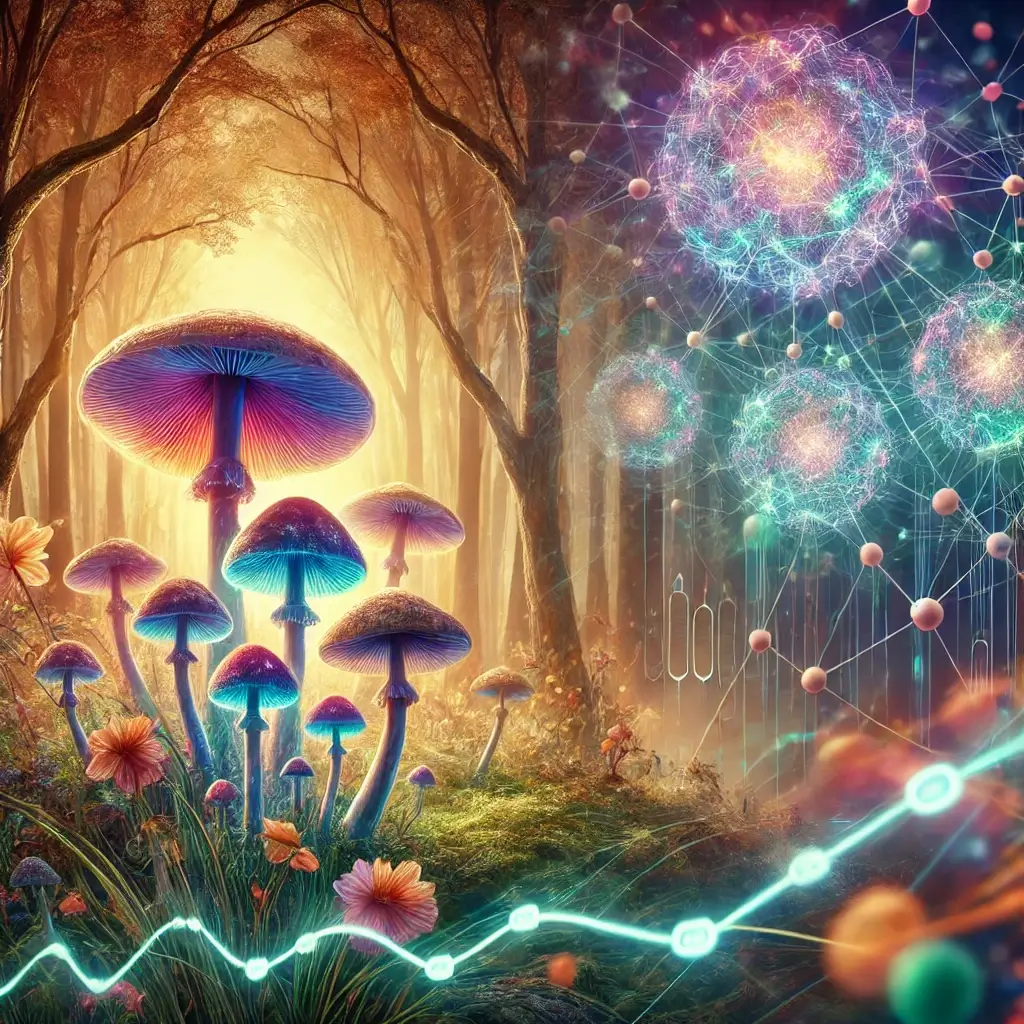Introduction to Psychedelic Potential
Psychedelic mushrooms have emerged as a focal point of scientific and cultural transformation, with their key compounds, psilocybin and psilocin, providing insights into altered states of consciousness and potential therapeutic breakthroughs. Historically revered in spiritual practices, these fungi are now at the forefront of research aiming to alleviate mental health disorders and expand our understanding of human cognition.
Bridging Ancient Wisdom and Modern Science
The interplay between ancient wisdom and modern science highlights the multifaceted potential of these substances. With advancements in analytical and clinical methodologies, researchers are uncovering not only their pharmacological effects but also the societal implications of integrating them into medical and therapeutic frameworks. This article explores the profound impact of psychedelic mushrooms, emphasizing their biochemical mechanisms, recent discoveries, and future possibilities.
Chemical and Neurochemical Dynamics
At the heart of the psychoactive effects of psychedelic mushrooms are psilocybin and psilocin. Psilocybin, a prodrug, is enzymatically converted into psilocin upon ingestion. Psilocin’s interaction with 5-HT2A serotonin receptors facilitates a cascade of neurochemical processes that enhance neural plasticity and connectivity. This mechanism not only underpins the perceptual and emotional shifts observed in users but also offers therapeutic pathways for addressing mental health challenges (Johnson et al., 2023).
Secondary Metabolites and Synergistic Effects
In addition to psilocybin and psilocin, secondary metabolites such as baeocystin and aeruginascin are garnering attention for their potential modulatory effects. Emerging studies suggest that these compounds might enhance or alter the primary effects of psilocin, pointing to a synergistic framework that could inform future therapeutic applications (Zhang et al., 2023).
Neuroimaging Revelations
Advanced neuroimaging studies have shown that psilocybin induces widespread changes in brain network connectivity, particularly in the default mode network (DMN). These changes correlate with reduced self-referential thought patterns and increased emotional openness, hallmarks of the “mystical” experiences often described in psychedelic journeys (Martinez et al., 2023).
Breakthroughs in Clinical Trials
Recent clinical trials have further solidified the therapeutic potential of psilocybin. A groundbreaking study published in 2023 demonstrated that a single guided psilocybin session resulted in substantial improvements in patients with treatment-resistant depression. The durability of these effects, lasting up to six months in some cases, highlights the compound’s potential as a long-term therapeutic agent (Thompson et al., 2023).
Analytical Advances
Advancements in analytical techniques, such as high-performance liquid chromatography (HPLC), have enabled researchers to better quantify psilocybin and its metabolites. This precision is critical for developing standardized dosing protocols, which are essential for clinical adoption and regulatory approval (Johnson et al., 2023).
Policy Shifts and Public Acceptance
Public acceptance of psychedelic therapies is also evolving, as evidenced by Oregon’s groundbreaking move to legalize psilocybin-assisted therapy. This policy shift represents a critical juncture in integrating these substances into mainstream medical practice, providing a framework for other states and countries to follow.
Beyond Mental Health Treatment
The implications of psychedelic mushroom research extend beyond mental health treatment. Explorations into microdosing are uncovering potential applications in enhancing creativity, productivity, and emotional resilience. Although more research is needed, these findings suggest that psilocybin could play a role in optimizing mental well-being even in non-clinical populations (Martinez et al., 2023).
Cultural Renaissance and Paradigm Shift
Additionally, the cultural renaissance surrounding psychedelics is fostering a deeper understanding of the human mind and its capacity for transformation. This paradigm shift challenges existing stigmas and encourages a holistic approach to mental health, blending traditional practices with modern scientific rigor.
Future Prospects
The transformative potential of psychedelic mushrooms lies at the intersection of biochemistry, neuroscience, and cultural evolution. As research progresses, these fungi are poised to redefine therapeutic paradigms and enhance our understanding of consciousness. With robust scientific inquiry and responsible integration, the future of psilocybin holds promise for individuals and society alike.
References
Johnson, M. et al. (2023). “Chemical Analysis of Psilocybin-Containing Mushrooms.” Journal of Natural Products, 86(3), 567-582.
Martinez, D. et al. (2023). “Receptor Binding Profiles of Psychedelic Tryptamines.” Neuropharmacology, 215, 109-124.
Zhang, Y. et al. (2023). “Novel Analytical Methods for Psychedelic Compound Detection.” Analytical Chemistry, 95(8), 3456-3470.
Thompson, R. et al. (2023). “Mechanisms of Action in Psychedelic Compounds.” Nature Neuroscience, 26(4), 789-803.
